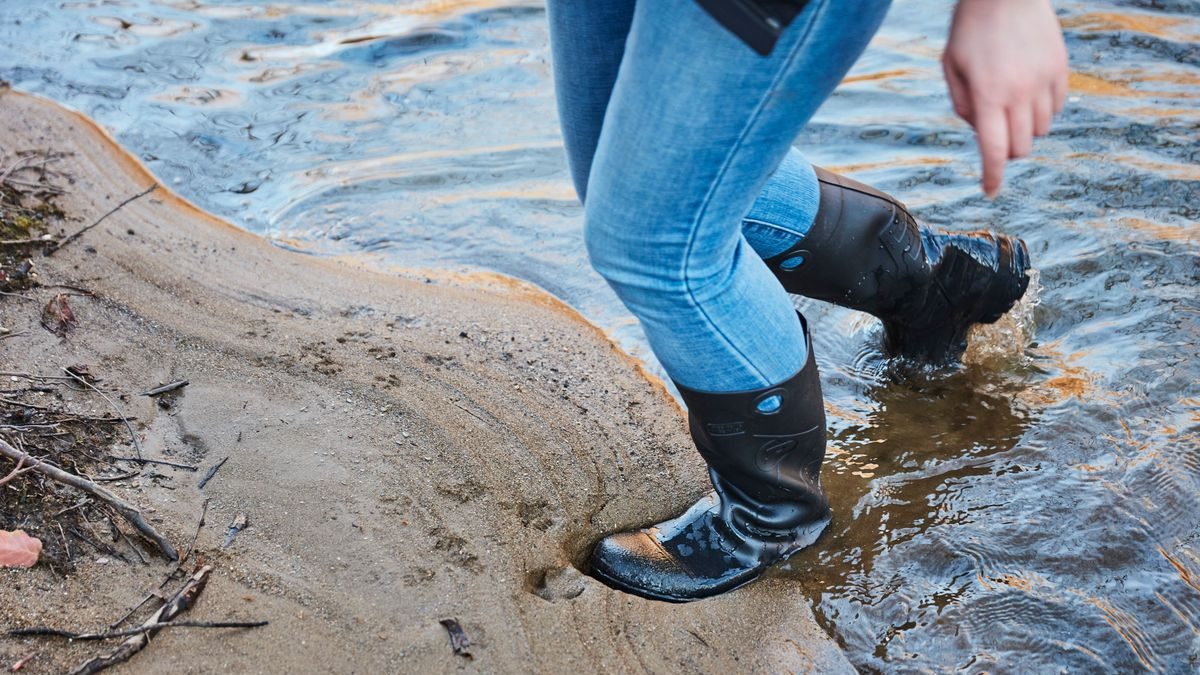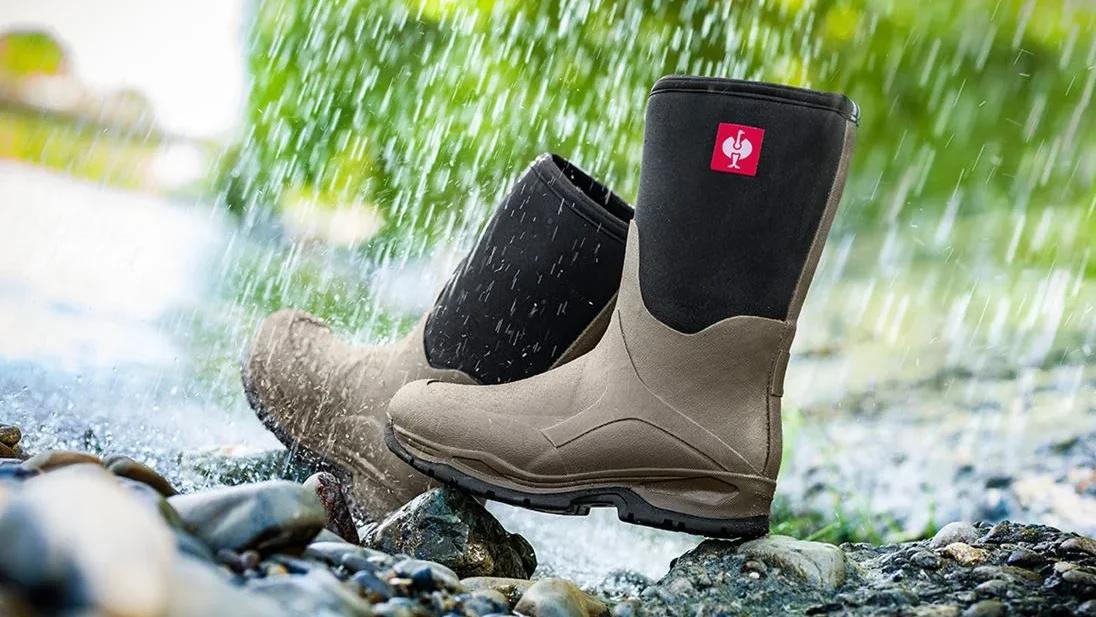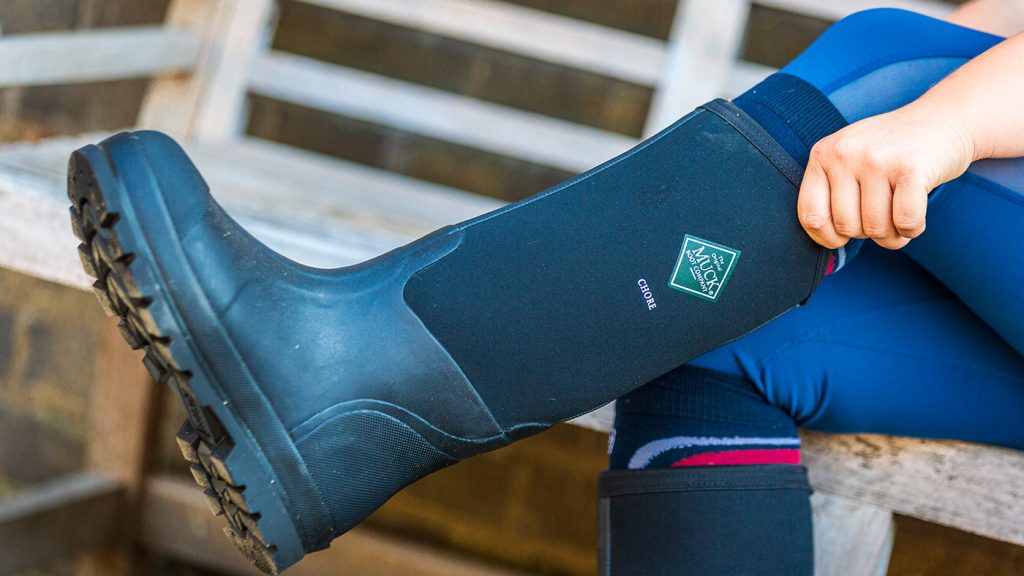When choosing the proper footwear for your hunting adventures, the decision between neoprene and rubber hunting boots plays a pivotal role. Both materials present distinctive features that cater to varied preferences and diverse hunting environments.
Recognizing the differences between neoprene and rubber can substantially impact your comfort and performance in the field.
In this pursuit of “Neoprene vs Rubber Hunting Boots,” we will delve into the characteristics of each material, helping you make an informed decision to ensure your hunting experience is enjoyable and optimized for the challenges nature presents.
What is the significant difference between Neoprene and Rubber Hunting Boots?
The primary distinction between neoprene and rubber hunting boots lies in the materials used for their construction. Neoprene boots are made of a synthetic rubber compound known as neoprene, prized for its insulating properties, flexibility, and waterproof nature.
On the other hand, rubber hunting boots are crafted entirely from natural rubber, providing durability, abrasion resistance, and a more straightforward design.
Neoprene boots excel in providing insulation, making them suitable for cold and wet conditions. The material retains body heat, keeping the feet warm in chilly weather, and is water-resistant for various terrains.
Rubber hunting boots are also waterproof and celebrated for their robustness and resilience, making them a preferred choice in rugged and abrasive environments.
Are neoprene boots better than rubber?
Neoprene, a material known for its flexibility and lightness, is employed in crafting waterproof work boots. These boots provide excellent insulation, ensuring a comfortable experience even in colder environments. Conversely, rubber, chosen for its unmatched strength and durability, is a prime choice for demanding work conditions.
Rubber Boots
Rubber boots emerge as the go-to option for outdoor activities involving exposure to water or damp conditions due to their inherent waterproof nature. This is particularly beneficial for pursuits like fishing, hunting, farming, and other outdoor work prone to encounters with water and mud.
A significant perk of rubber boots lies in their robust durability. The durability of rubber empowers these boots to endure rugged conditions and resist wear and tear, guaranteeing a long-lasting investment that proves cost-effective over time. Maintenance of rubber boots is a hassle-free affair as they are easy to clean.

Most can be effortlessly hosed down or wiped with a damp cloth, making them incredibly convenient for activities such as farming, where boots are likely to get muddy and dirty. However, it’s crucial to note some drawbacks of rubber boots. They lack insulation compared to neoprene boots, making them less suitable for freezing weather.
Their stiffness may impede movement, causing discomfort during prolonged wear. Another downside is their limited breathability, as rubber boots do not facilitate proper ventilation. This may lead to sweaty feet, contributing to discomfort and potential issues like blisters.
Neoprene Boots
Neoprene boots provide outstanding insulation by cleverly trapping and retaining body heat. This unique design proves invaluable for activities demanding extended exposure to cold and damp surroundings, including fishing, hunting, and water sports.
Beyond insulation, these boots prioritize comfort and flexibility. Crafted from a soft, pliable material, they conform to the foot, offering a personalized fit that minimizes the risk of blisters and chafing. The inherent flexibility enhances ease of movement, making them a top choice for activities requiring agility.
Adding to their versatility, neoprene boots boast water resistance, rendering them perfect for water-centric sports like kayaking, paddleboarding, and surfing. The water-resistant material prevents absorption, ensuring dry feet and preventing water intrusion.

However, it’s worth noting that neoprene boots come at a higher cost than rubber boots, which is attributable to their superior insulation and additional features. Despite their comfort, neoprene boots may have a shorter lifespan, especially with frequent use, necessitating proper storage for maintenance.
Furthermore, the insulation that makes neoprene boots ideal for cold weather activities becomes a drawback in warmer conditions. The potential for overheating and discomfort makes it crucial to consider weather conditions when choosing between neoprene and other boot types.
When should you use rubber boots and Neoprene boots?
Rubber and neoprene boots boast distinct features catering to specific activities and environments. Consider the following scenarios to determine the most suitable choice:
Rubber Boots
- Agricultural Work: In farming, gardening, and other rural tasks involving exposure to water, mud, and challenging conditions, rubber boots excel.
- Fishing and Hunting: Rubber boots are a practical choice for fishing and hunting requiring prolonged periods in water or wet environments.
- Construction Work: Rubber boots with steel-toe caps are a common preference in construction work, offering added foot protection.
Neoprene Boots
- Water Sports: Neoprene boots shine in water sports such as kayaking, rafting, and surfing, providing warmth and dryness in cold water conditions.
- Cold Weather Activities: For ventures into cold and wet surroundings like snowmobiling, skiing, and ice fishing, neoprene boots excel in insulation.
- Diving: Commonly utilized in scuba diving and snorkeling, neoprene boots ensure warmth in cold water environments, enhancing the overall diving experience.
Are Neoprene Boots Suitable for Extreme Cold Temperatures?
Neoprene boots prove effective in cold temperatures, yet they might fall short in highly frigid conditions. Their design focuses on insulation, ensuring warmth in cold water or mild to moderately cold weather.
Nevertheless, neoprene boots may not deliver sufficient insulation to keep the feet warm when faced with extreme cold. For those intending to use neoprene boots in frigid temperatures, using thick socks or adding extra insulation to the boots becomes essential to enhance warmth.

It’s crucial to acknowledge that neoprene boots, while proficient in their insulation capabilities, are less durable than rubber boots. Harsh conditions can expedite wear and tear, compromising their ability to provide adequate insulation.
Therefore, users should consider the trade-off between insulation and durability when opting for neoprene boots in challenging environments.
Which Type of Boot Is More Comfortable to Wear for Extended periods?
Neoprene boots generally offer a higher comfort level for prolonged wear than rubber boots. Neoprene’s superior cushioning and shock absorption are pivotal in minimizing foot fatigue and discomfort during prolonged usage.
On the contrary, rubber boots may present stiffness and pain, especially without a comfortable lining or insole. Additionally, rubber boots generally lack the same cushioning and shock absorption level found in neoprene boots, potentially leading to increased foot fatigue and discomfort over time.
However, it’s crucial to note that comfort is subjective, varying from person to person. Individual preferences play a significant role, and selecting boots you feel comfortable with is essential. Moreover, considering the specific activity and environment becomes paramount when deciding between rubber and neoprene boots, as comfort requirements may differ based on the circumstances.
Final Thoughts
The decision between rubber boots and neoprene boots hinges on your particular requirements and the activities on your agenda. Rubber boots, boasting innate waterproof properties and heightened durability compared to neoprene boots, prove ideal for engagements involving water exposure and rugged conditions.
Conversely, neoprene boots, renowned for exceptional insulation and enhanced comfort during extended wear, emerge as the preferred choice for activities demanding prolonged exposure to cold and wet environments. The nature of your planned activities will guide you toward the optimal balance of waterproofing, durability, insulation, and comfort offered by either rubber or neoprene boots.

